Much has been made of Taiwan's claim to be a "green silicon island," but usually any time you hear the claim being made it's regarding silicon, or the nation's high-tech industries. Comparatively less press is given to the "green" part of the equation, largely because the nation's tourism industry lags far behind its high-tech counterpart. If all Taiwan's tourist destinations were on a par with Mingchih Forest Recreation Area (明池森林遊樂 區), that might not be the case.
Perched on the highest point of the Northern Cross-Island Highway in Ilan County, the area is made famous by a single attribute: trees. At 1,250m in elevation, this "paradise in the clouds," as some call it, is as close to an alpine setting as you can approach in Taiwan. It's also an ideal location for local varieties of cypress, redwoods and fir to prosper.
And prosper they have -- for the most part. Before it was a recreation area, Mingchih was a logging camp. Much of the hardwood that once stood proudly here now lines the floors and walls of Japanese homes. Lumber was the area' s primary source of income even after Japan ceded the island at the end of World War II. While Mingchih itself has been a tourist destination for many years now and hasn't hosted any logging companies, the surrounding hills were still being cleared of trees until three years ago, when the industry was banned from the area. Since then, a nearby area populated with millennia-old hardwoods has been turned into the Garden of Divine Trees (神木園) -- and the sharpest thing that approaches the area is Hung Wen-chang's (
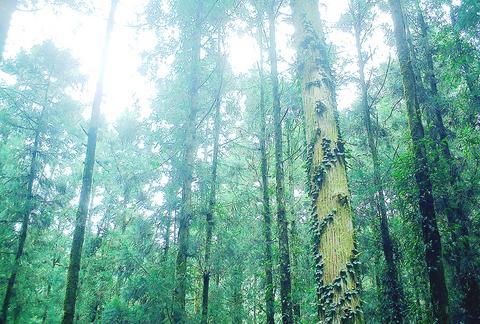
Hung retired from Taiwan's Bureau of Forestry nine years ago but continues giving tours of the garden several times a week. He seems, in his own way, as old and stoic as the trees themselves and introduces them like the narrator of a drama that's taken millennia to play out.
He points to a pair of trees several meters apart, one hollowed out near the base and the other with the meter-long trunk of a sawed-off branch protruding from the same spot. "That's the girl," he says, gesturing to the first, "and that's the boy," he says, indicating the branch bulging from the second. "Poor fella's been like that as long as anyone can remember and he's never going to get any closer to that girl." He repeats the joke in Japanese for the only pair of tourists in the group who aren't laughing, then scampers off to introduce the next character in the drama as the Japanese couple join the laughter and snap photos of the boy tree.
"This is Sima Qian (
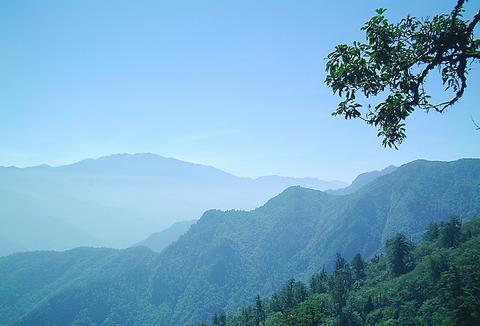
"Sima Qian was, of course, named after the Han-dynasty historian of the same name because they were both born around the same time. Sima Qian has been recording the events on this promontory for the past 1,900 years," Hung says. He then turns away and, for several moments, looks silently to Taiping Mountain in the distance while the tour group stands slack-jawed, trying to comprehend what Sima Qian might have seen in all that time.
Hung's tour of the ancient grove is an example of eco-tourism at its best in Taiwan. He leads the group to a pavilion with a large table in it made from the trunk of a felled tree. With his pen, he points to the thousands of lines and markings on it and explains how to determine its age, which side of the tree faced north, what years it was scarred by fire or suffered from drought and even when he was born. He's taken a stump and used it to captivate an audience that otherwise might never have truly seen the forest for all the big pretty trees.
Other examples of eco-tourism at its best can be found back at the resort area around the alpine lake from which Mingchih [clear pool] gets its name. While the murky body of water isn't nearly as clear as its name suggests, it is nonetheless the focal point of the area near the resort. It's surrounded by several development projects that, unlike similar projects in Taiwan's other recreation areas, seem to belong to their surroundings rather being poured on top.
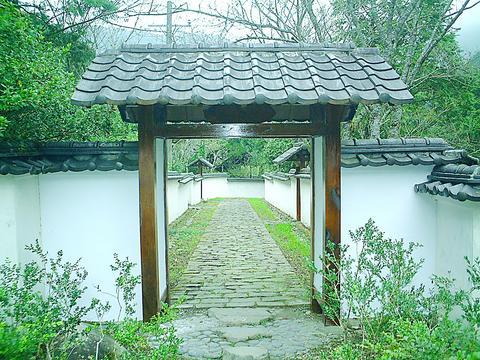
The gem of these is a compound hidden behind 2m-high white walls topped with roof tiling. Here is where logging companies long ago cut away the area's proudest assets, but landscape architects have artfully created an oasis of serenity. Waterfalls feed into a fishpond near the center and adjacent to it is a Tang dynasty-style rock garden, reportedly the first in Taiwan. Several pavilions hewn from the same hardwoods that once grew here dot the landscape and are connected by a network of trails leading through the second-gener-ation trees replanted decades ago. When the fog flows over the mountains and settles in the pines, it's hard to imagine a quieter place.
Then a child runs across the raked-rock garden screaming for his parents. He wants to go play in the labyrinth.
Labyrinth? The architects of Mingchih Forest Recreation Area were smart enough to remember the little ones when planning this family forest destination. On the southern shore of Mingchih Lake, covering an area about half the size of a football pitch, is a giant wooden labyrinth climbing the canopy-covered hillside. The rooftops of eight pavilions rise above the labyrinth walls, each offering a bird's-eye perspective of the floor plan and an opportunity to plan your escape. Each roof is topped with a wooden carving of one of the seven dwarves. Snow White sits atop the pavilion at the labyrinth's entrance.
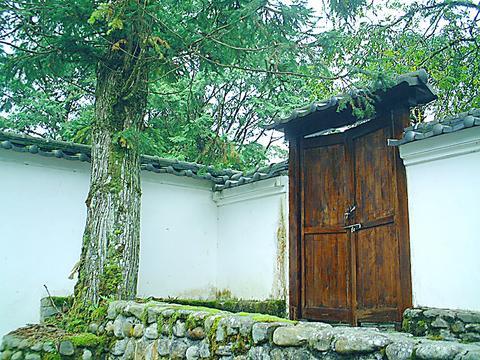
Like the pavilions near the rock garden area, the labyrinth is made from local materials and seems a part of its environment. What's more, the craftsmanship involved in building this and all of Mingchih's facilities is unsurpassed in Taiwan's official tourist destinations. Even the trails are worth a mention. Where they're not made of meter-sided laid stone, as found near the rock garden, they're hewn from railroad sleeper-sized lumber raised several feet off the ground. Often stairwells will lead to walkways built among the tree canopies. In every floorboard along the walkways, NT$50 coin-sized holes have been drilled then overfilled with cement to give the boards traction. The elevated walkways have the added benefit of preventing people from trampling through the woods. The amount of attention and effort put into the facilities is impressive.
"We don't advertise much, but people come nonetheless," says Mingchih's general manager, Huang Feng-jiau (
You can visit the Web site of Mingchih Forest Recreation Area at http://www.shineyou.com.tw/mingchin/index_1.htm for more information on housing and dining facilities. The Web site is in Chinese only. To reserve a room at the Mingchih mountain hostel or one of its many cabins, call (03) 989 4104. The resort administration also arranges rides to and tours of the Garden of Divine Trees at no extra charge.
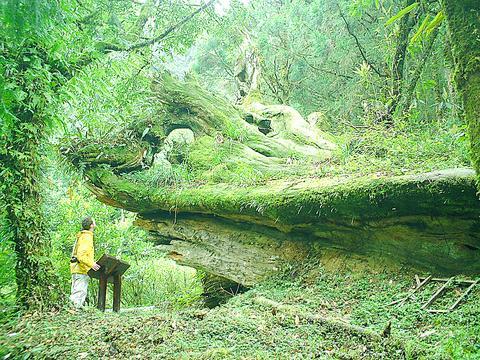
This is the last in the series of Finding Formosa, which explored the forest recreation areas of the country.
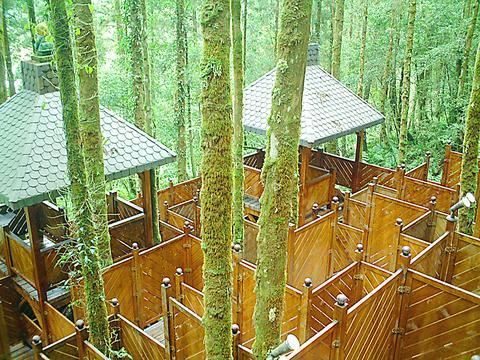
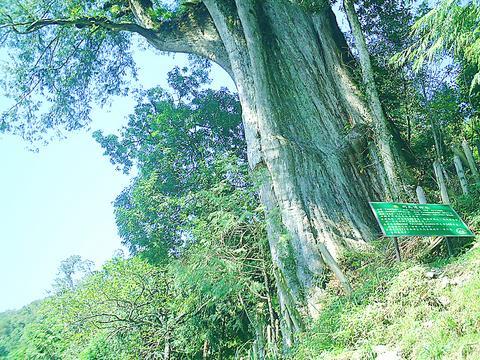

One of the biggest sore spots in Taiwan’s historical friendship with the US came in 1979 when US president Jimmy Carter broke off formal diplomatic relations with Taiwan’s Republic of China (ROC) government so that the US could establish relations with the People’s Republic of China (PRC). Taiwan’s derecognition came purely at China’s insistence, and the US took the deal. Retired American diplomat John Tkacik, who for almost decade surrounding that schism, from 1974 to 1982, worked in embassies in Taipei and Beijing and at the Taiwan Desk in Washington DC, recently argued in the Taipei Times that “President Carter’s derecognition

This year will go down in the history books. Taiwan faces enormous turmoil and uncertainty in the coming months. Which political parties are in a good position to handle big changes? All of the main parties are beset with challenges. Taking stock, this column examined the Taiwan People’s Party (TPP) (“Huang Kuo-chang’s choking the life out of the TPP,” May 28, page 12), the Democratic Progressive Party (DPP) (“Challenges amid choppy waters for the DPP,” June 14, page 12) and the Chinese Nationalist Party (KMT) (“KMT struggles to seize opportunities as ‘interesting times’ loom,” June 20, page 11). Times like these can

Dr. Y. Tony Yang, Associate Dean of Health Policy and Population Science at George Washington University, argued last week in a piece for the Taipei Times about former president Ma Ying-jeou (馬英九) leading a student delegation to the People’s Republic of China (PRC) that, “The real question is not whether Ma’s visit helps or hurts Taiwan — it is why Taiwan lacks a sophisticated, multi-track approach to one of the most complex geopolitical relationships in the world” (“Ma’s Visit, DPP’s Blind Spot,” June 18, page 8). Yang contends that the Democratic Progressive Party (DPP) has a blind spot: “By treating any

You can tell a lot about a generation from the contents of their cool box: nowadays the barbecue ice bucket is likely to be filled with hard seltzers, non-alcoholic beers and fluorescent BuzzBallz — a particular favorite among Gen Z. Two decades ago, it was WKD, Bacardi Breezers and the odd Smirnoff Ice bobbing in a puddle of melted ice. And while nostalgia may have brought back some alcopops, the new wave of ready-to-drink (RTD) options look and taste noticeably different. It is not just the drinks that have changed, but drinking habits too, driven in part by more health-conscious consumers and